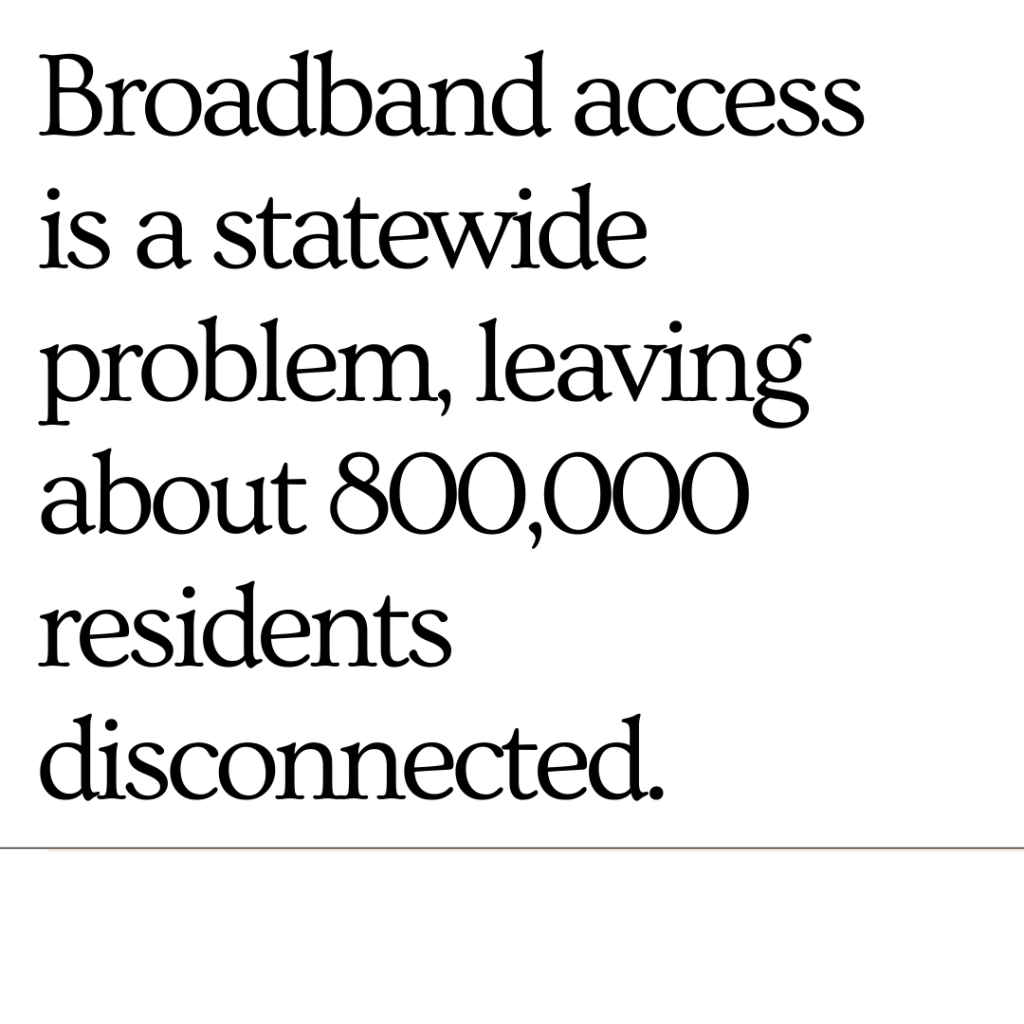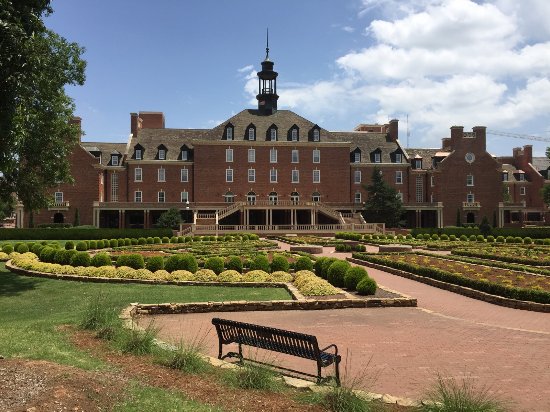by Corian Zacher, Policy Counsel
Driving through Stillwater on a cold day in October, you’ll see a flood of orange lining Main Street. The monochrome palette is not a mistake or a strange coincidence. For people in Stillwater, orange represents loyalty and unwavering support for Oklahoma State University, or “OSU.” Normally, OSU boasts “America’s Greatest Homecoming Celebration.” Students, alumni, and Stillwater residents alike join in a week-long party filled with so many events that it is easy to forget that football is the centerpiece. Community pride is not limited support for OSU, but also for local businesses and artists who bring people together.
Oklahoma, a largely rural state with a significant portion of Native American land, is ranked 47th in the nation for internet connectivity. Broadband access is a statewide problem, leaving about 800,000 residents disconnected. While Stillwater is more connected than most, only around 82% of people have a broadband subscription. Nearly a fifth of the population still lack a connection that is more essential than ever for business, education, healthcare, and many other basic necessities.
 60 miles away from Oklahoma City and Tulsa, and a 45-minute drive from the nearest similarly sized town, Stillwater often feels like any other small town. The community is tight-knit with close groups of longtime residents. Local coffee shops outnumber national chains by four to one and with only one public high school. Affordable and reliable broadband connectivity options are limited.
60 miles away from Oklahoma City and Tulsa, and a 45-minute drive from the nearest similarly sized town, Stillwater often feels like any other small town. The community is tight-knit with close groups of longtime residents. Local coffee shops outnumber national chains by four to one and with only one public high school. Affordable and reliable broadband connectivity options are limited.
OSU’s network offers gigabit speed internet to 95% of Stillwater’s campus and service is available for students and employees, who rely on the network for completing homework, research, and connecting with friends and family online. Off campus, only one provider offers gigabit speeds to a majority of residents, serving about 83% of the city, while 8.3% of the city entirely lacks broadband access. AT&T offers a fiber connection advertising up to gigabit speeds at the 39.99 a month, the same price as its 100 Mbps offering, but it only serves about 5% of the city and Stillwater is not listed as a city in progress. For most Stillwater residents, there is little or no choice among providers, and speed test results show that most people are not using the internet at anywhere near gigabit speeds.
Facing COVID-19 limitations, broadband access is imperative now more than ever. Students and employees working off campus must rely on home broadband subscriptions, if they have one. For the 35% of the population living below the poverty line, spending over $500 a year on a broadband subscription may be impossible. While public service offerings usually provide an option for people who cannot afford or access broadband at their home, COVID-19 strains those opportunities, leaving many without any broadband access at all. People who rely on the public library for internet access are limited to one hour of computer time. People who may normally visit a coffee shop or local restaurant for public wifi must risk their health and safety to do so. Fortunately, researchers are considering innovative solutions for expanding and improving service offerings.
Researchers at OSU are also piloting a program with 15 libraries across the state, providing the resources for loanable wifi hotspots that can be checked out for a week at a time. Another pilot program makes use of TV whitespace, essentially “broadcasting” wifi using transmission towers that can reach several miles. Motivated by a desire to help the people of Oklahoma who are living with slow speeds and high prices, researchers also hope that their innovations will help rural farmers work more efficiently, improving both their businesses and their lives through the use of internet-based farming equipment.
This year, the flood of orange in October is more likely to happen online than along Main Street, but a fifth of the community will not be able to join the celebration because they lack internet access. Fortunately, the story is not over. With innovative solutions from the city and OSU, the future may burn bright orange from Main Street to social media.

